Table of Contents
ToggleIn today’s tech-savvy world, the cloud isn’t just a fluffy thing in the sky; it’s the powerhouse behind businesses everywhere. Enter the trio of cloud computing: SaaS, PaaS, and IaaS. These acronyms might sound like a secret language, but they’re actually the keys to unlocking efficiency, scalability, and innovation for companies of all sizes.
Overview of SaaS, PaaS, and IaaS
SaaS, PaaS, and IaaS represent key components of cloud computing that drive business efficiency and agility. Understanding each model provides clarity on how organizations can utilize cloud services.
Definition of SaaS
SaaS, or Software as a Service, involves delivering software applications over the internet. Companies access these applications through a subscription model, eliminating the need for installation and maintenance. Examples of SaaS include email platforms, customer relationship management systems, and office productivity tools. Users benefit from automatic updates and scalable resources, allowing them to focus on core business activities without worrying about infrastructure.
Definition of PaaS
PaaS, or Platform as a Service, offers a platform for developers to build, deploy, and manage applications without the complexity of hardware and software management. This model streamlines the development process, providing essential tools like application hosting and database management. Popular PaaS solutions include Google App Engine and Microsoft Azure. Developers can create applications more efficiently, benefiting from built-in testing and deployment features that enhance productivity.
Definition of IaaS
IaaS, or Infrastructure as a Service, provides virtualized computing resources over the internet. Organizations access servers, storage, and networking through a flexible and scalable model. Examples of IaaS include Amazon Web Services and Google Cloud Platform. Users control the infrastructure while outsourcing management to the service provider, allowing for easier resource allocation and cost management. This model supports rapid scaling, enabling businesses to respond quickly to changing demands.
Comparison of SaaS, PaaS, and IaaS

SaaS, PaaS, and IaaS serve distinct roles within cloud computing. Understanding their differences clarifies their unique functions in supporting business operations.
Key Differences
SaaS delivers software applications via the internet, allowing users to access tools easily without maintenance. PaaS provides a development platform, enabling developers to build and manage applications efficiently. IaaS focuses on virtual infrastructure, offering resources like servers and storage, which organizations can scale as needed. While SaaS is user-oriented, PaaS targets developers, and IaaS appeals to IT departments. Each model operates at a different layer of the cloud stack, ensuring diverse solutions based on varying business needs.
Use Cases for Each Model
Businesses often leverage SaaS for applications like email, customer relationship management, or collaboration tools. Companies benefit from PaaS when developing applications because it streamlines deployment and management tasks. IaaS is useful for organizations requiring flexible infrastructure, such as startups that need to manage costs while scaling operations. Enterprises may choose SaaS for quick implementation, PaaS for innovation, and IaaS for control over physical resources. Each cloud model accommodates specific objectives, enhancing operational efficiency across industries.
Benefits of SaaS, PaaS, and IaaS
SaaS, PaaS, and IaaS offer distinct advantages that enhance business operations and support growth.
Advantages of SaaS
SaaS eliminates the need for installations and maintenance, allowing users immediate access to software applications. Flexible subscription models provide cost savings, with predictable expenses for budgeting. Automatic updates ensure users always utilize the latest features without downtime. Collaboration tools facilitate teamwork across different locations, improving communication and productivity. Scalability accommodates fluctuations in demand easily, enabling companies to add or remove users efficiently.
Advantages of PaaS
PaaS simplifies the development process by providing pre-built tools and services for programmers. Rapid application development accelerates time-to-market for new products and features. Integration capabilities with various databases and APIs enhance functionality seamlessly. Developers benefit from a collaborative environment that supports teamwork and innovation. Cost efficiency arises from reduced infrastructure management, allowing teams to focus on development rather than maintenance.
Advantages of IaaS
IaaS provides scalable infrastructure, enabling organizations to adapt resources based on demand quickly. Pay-as-you-go pricing models reduce upfront capital expenses, making budgeting straightforward. Virtualization allows for efficient resource utilization, ensuring businesses only pay for what they use. Disaster recovery solutions built into IaaS offerings enhance data security and availability. Remote access capabilities enable workforce flexibility, supporting distributed teams effectively.
Challenges and Considerations
Cloud computing offers significant advantages, yet challenges exist that organizations must address. Security and compliance issues frequently arise when adopting SaaS, PaaS, and IaaS models.
Security Concerns
Data breaches pose a major threat in cloud environments. Sensitive information stored in SaaS applications, PaaS platforms, and IaaS infrastructures needs protection against unauthorized access. Organizations must implement strong encryption measures and multi-factor authentication to enhance security. Regular audits and vulnerability assessments help identify potential weaknesses. Additionally, service level agreements (SLAs) should clarify security responsibilities between providers and customers, ensuring that both parties prioritize data protection. Organizations must stay informed about emerging security threats to adapt strategies accordingly.
Compliance Issues
Compliance with regulations is crucial for businesses using cloud services. Industry-specific standards, like GDPR and HIPAA, require stringent data protection measures. Companies must ensure that cloud providers offer compliance features within their services. Verification of compliance certifications, such as ISO 27001 and SOC 2, provides assurance of the provider’s adherence to industry standards. Understanding the data residency requirements also plays a significant role, as different regulations mandate specific locations for data storage. Keeping abreast of regulatory changes helps organizations maintain compliance and avoid penalties.
Understanding SaaS, PaaS, and IaaS is crucial for any organization looking to harness the power of cloud computing. Each model serves distinct purposes and offers unique benefits that can drive efficiency and innovation. By choosing the right service model, businesses can optimize their operations and adapt to changing market demands.
However, it’s essential to remain vigilant about security and compliance challenges that accompany cloud adoption. Organizations must prioritize protecting their data while leveraging these powerful tools. As cloud technology continues to evolve, staying informed will empower businesses to make strategic decisions that enhance their growth and competitiveness.







